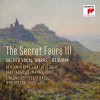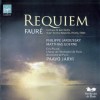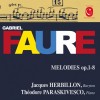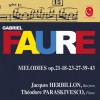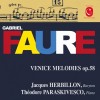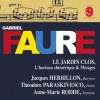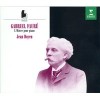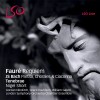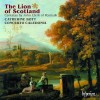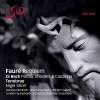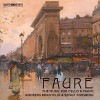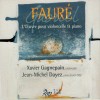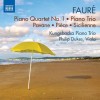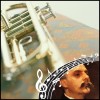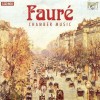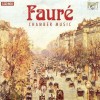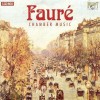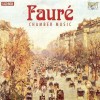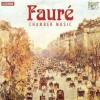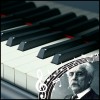Composers
Gabriel Urbain Fauré (12 May 1845 – 4 November 1924) was a French composer, organist, pianist and teacher. He was one of the foremost French composers of his generation, and his musical style influenced many 20th century composers. Among his best-known works are his Nocturnes for piano, the songs "Après un rêve" and "Clair de lune", his Pavane and his Requiem.
Born into a cultured but not unusually musical family, Fauré revealed his talent when he was a small boy. He was sent to a music college in Paris, where he was trained to be a church organist and choirmaster. Among his teachers was Camille Saint-Saëns, who became a lifelong friend. In his early years, Fauré earned a modest living as an organist and teacher, leaving him little time for composition. When he became successful, holding the important posts of organist of the Église de la Madeleine and head of the Paris Conservatoire, he still lacked time for composing, retreating to the countryside in the summer holidays to concentrate on composition.
By his last years, Fauré was recognised in France as the leading French composer of his day. An unprecedented national musical tribute was held for him in Paris in 1922 headed by the President of the Republic. Fauré had many admirers in England, but his music, though known in other countries, took decades more to become widely accepted. His music has been described as linking the end of Romanticism with the modernism of the second quarter of the 20th century. When he was born, Chopin was still composing, and by the time of his death the atonal music of the Second Viennese School was being heard. The Grove Dictionary of Music and Musicians, which describes him as the most advanced composer of his generation in France, notes that his harmonic and melodic innovations affected the teaching of harmony for later generations. In contrast with the charm of his earlier music, his last works, written when increasing deafness had struck him, are elusive and withdrawn in character.
Fauré was born in Pamiers, Ariège, Midi-Pyrénées, on 12 May 1845, the fifth son and sixth child of Toussaint-Honoré Fauré (1810–85) and Marie-Antoinette-Hélène Lalène-Laprade (1809–87). He was sent to live with a wet nurse until he was four years old. In 1849 Toussaint-Honoré was appointed director of the École Normale at Montgauzy, near Foix, and Fauré returned to live with his family. There was a chapel attached to the school, and the young Fauré spent hours playing the harmonium there. An old blind woman, who came to listen and give the boy advice, told his father of Fauré's gift for music. In 1853 an official of the National Assembly of France, Dufaur de Saubiac, heard Fauré and advised his father to send him to the École de Musique Classique et Religieuse (School of Classical and Religious Music), which Louis Niedermeyer was setting up in Paris. After reflecting for a year, Fauré's father agreed and took the 9-year-old boy to Paris in October 1854.
Fauré remained a boarder at the school for 11 years, during which he was helped by a scholarship from the bishop of his home diocese. The régime at the school was austere, the rooms were gloomy, the food was mediocre, and the boys were required to wear an elaborate uniform. The musical tuition, however, was excellent. Under Niedermeyer, the curriculum concentrated on church music, with the aim of producing qualified organists and choirmasters. Fauré's tutors were Clément Loret for the organ, Louis Dietsch for harmony, Xavier Wackenthaler for counterpoint and fugue, and Niedermeyer for the piano, plainsong and composition.
In March 1861 Niedermeyer died. Camille Saint-Saëns, who took his place in charge of piano studies, introduced his students to contemporary music, including that of Schumann, Liszt and Wagner. He took great pleasure in the progress of the gifted young Fauré. The two became close friends and remained so until Saint-Saëns died sixty years later.Fauré won many prizes while at the school, including premiers prix in composition for the Cantique de Jean Racine, Op. 11, the earliest of his choral works to enter the regular repertory.He left the school in July 1865, as a Laureat in organ, piano, harmony and composition, with a Maître de Chapelle diploma.
On leaving the École Niedermeyer, Fauré was appointed chief organist at the Church of Saint-Sauveur, at Rennes in Brittany. During his four years there he supplemented his income by taking private pupils, giving "countless piano lessons". He was bored at Rennes and had an uneasy relationship with the parish priest, who rightly doubted Fauré's religious conviction. Fauré was regularly seen stealing out during the sermon for a cigarette, and in early 1870, when he turned up to play at Mass one Sunday still in his evening clothes having been out all night at a ball, he was asked to resign. Almost immediately he secured the post of assistant organist at the church of Notre-Dame de Clignancourt, in the north of Paris. He remained there for only a few months; on the outbreak of the Franco-Prussian War in 1870, he volunteered for military service. He took part in the action to raise the Siege of Paris and saw action at Le Bourget, Champigny and Créteil.
After France's defeat by Prussia, there was a brief, bloody conflict within Paris, during the Commune. Fauré escaped to Rambouillet where one of his brothers lived, and then travelled to Switzerland, where he took up a teaching post at the École Niedermeyer, which had temporarily relocated there to avoid the violence in Paris. His first pupil at the school was André Messager, who became a lifelong friend and occasional collaborator. When Fauré returned to Paris in October 1871, he was appointed choirmaster at the Église Saint-Sulpice under the composer and organist Charles-Marie Widor. He regularly attended Saint-Saëns's musical salon gatherings and those of Pauline Viardot, to whom Saint-Saëns introduced him. He was an early member of the Société Nationale de Musique, formed in February 1871 under the joint chairmanship of Romain Bussine and Saint-Saëns, to promote new French music. Other members included Georges Bizet, Emmanuel Chabrier, Henri Duparc, Vincent d'Indy, César Franck, Édouard Lalo and Jules Massenet. Fauré became secretary of the society in 1874.Many of his works were first presented at the society's concerts.
In 1874, Fauré moved from Saint-Sulpice to the Église de la Madeleine, deputising for the principal organist, Saint-Saëns, during the latter's many absences on tour. Some admirers of Fauré's music have expressed regret that although he played the organ professionally for four decades, he left no solo compositions for the instrument.Saint-Saëns said of Fauré that he was "a first class organist when he wanted to be", and he was renowned for his improvisations. Nevertheless, he preferred the piano to the organ, which he played only because it gave him a regular income.
1877 was a significant year for Fauré, both professionally and personally.In January his violin sonata was performed at a Société Nationale concert with great success, marking a turning-point in his composing career. In March, Saint-Saëns retired from the Madeleine, succeeded as organist by Théodore Dubois, his choirmaster, to which subordinate post Fauré was now appointed. In July Fauré became engaged to Pauline Viardot's daughter Marianne, with whom he was deeply in love. To his great sorrow, she broke off the engagement in November 1877, for reasons that are not clear. To distract Fauré, Saint-Saëns took him to Weimar and introduced him to Franz Liszt. This visit gave Fauré a liking for foreign travel, which he pursued for the rest of his life. From 1878, he and Messager made trips abroad to see Wagner operas. They saw Das Rheingold and Die Walküre at Cologne Opera; the complete Ring cycle at the Hofoper in Munich and at Her Majesty's Theatre in London; and Die Meistersinger in Munich and at Bayreuth, where they also saw Parsifal. They frequently performed as a party piece their joint composition, the irreverent Souvenirs de Bayreuth. This short, skittish piano work for four hands sends up themes from The Ring. Fauré admired Wagner and was familiar with the smallest details of his music,but he was one of the few composers of his generation not to come under Wagner's musical influence.
In 1883, Fauré married Marie Fremiet, the daughter of a leading sculptor Emmanuel Fremiet. The marriage was affectionate, but Marie became resentful of Fauré's frequent absences, his "horreur du domicile", and his love affairs, while she remained at home. After a romantic attachment to the singer Emma Bardac from around 1892, possibly followed by another to the composer Adela Maddison, in 1900 Fauré met the pianist Marguerite Hasselmans, the daughter of Alphonse Hasselmans. This led to a relationship which lasted for the rest of Fauré's life; he maintained her in a Paris apartment, and she acted openly as his companion.
Fauré and his wife had two sons, the first, born in 1883, Emmanuel Fauré-Fremiet (Marie insisted on combining her family name with Fauré's), became a biologist of international reputation; the second son Philippe was born in 1889.To support his family, Fauré spent most of his time in running the daily services at the Madeleine and teaching piano and harmony lessons. His compositions earned him a negligible amount, because his publisher bought them outright for 50 francs each, and Fauré received no royalties. During this period, he wrote several large-scale works, in addition to many piano pieces and songs, but he destroyed most of them after a few performances, only retaining a few movements in order to re-use motifs.
As a young man, Fauré had been very cheerful; a friend wrote of his "youthful, even somewhat child-like, mirth." His broken engagement, combined with his lack of success as a composer, precipitated bouts of depression, which he described as "spleen". In the 1890s, however, his fortunes improved. When Ernest Guiraud, professor of composition at the Paris Conservatoire, died in 1892, Saint-Saëns encouraged Fauré to apply for the vacant post. The conservative establishment at the Conservatoire regarded Fauré as dangerously modern, and their head, Ambroise Thomas, blocked the appointment, declaring, "Fauré? Never! If he's appointed, I resign." However, Fauré was appointed to another of Guiraud's posts, inspector of the music conservatories in the French provinces, which meant prolonged travelling around the country, but gave him a steady income and enabled him to give up teaching amateur pupils.
In 1896, Ambroise Thomas died, and Théodore Dubois took over as head of the Conservatoire. Fauré succeeded Dubois as chief organist of the Madeleine. Dubois' move had further repercussions: Jules Massenet, professor of composition at the Conservatoire, had expected to succeed Thomas, but had overplayed his hand by insisting on being appointed for life. He was turned down, Dubois was appointed instead of him, and Massenet resigned in fury. Fauré was appointed professor of composition in his place. He taught many young composers, including Maurice Ravel, Florent Schmitt, Charles Koechlin, Louis Aubert, Jean Roger-Ducasse, George Enescu, Paul Ladmirault, Alfredo Casella and Nadia Boulanger. In Fauré's view, his students needed a firm grounding in the basic skills, which he was happy to delegate to his capable assistant André Gedalge. His own part came in helping them make use of these skills in the way that suited each student's talents. Roger-Ducasse later wrote: "Taking up whatever the pupils were working on, he would evoke the rules of the form at hand ... and refer to examples, always drawn from the masters." Ravel always remembered Fauré's open-mindedness as a teacher. Having received Ravel's string quartet with less than his usual enthusiasm, Fauré asked to see the manuscript again a few days later, saying, "I could have been wrong". The musicologist Henri Prunières wrote, "What Fauré developed among his pupils was taste, harmonic sensibility, the love of pure lines, of unexpected and colorful modulations; but he never gave them receipts for composing according to his style and that is why they all sought and found their own paths in many different, and often opposed, directions."
Fauré's works of the last years of the century include incidental music for the English premiere of Maurice Maeterlinck's Pelléas et Mélisande (1898), and Prométhée, a lyric tragedy composed for the amphitheatre at Béziers. Being written for outdoor performance, the work is scored for huge instrumental and vocal forces. Its premiere in August 1900 was a great success, and it was revived at Béziers the following year and in Paris in 1907. A version with orchestration for normal opera house-sized forces was given at the Paris Opéra in May 1917 and received more than 40 performances in Paris thereafter. From 1903 to 1921, Fauré regularly wrote music criticism for Le Figaro, a role in which he was not at ease. His biographer Jean-Michel Nectoux writes that Fauré's natural kindness and broad-mindedness predisposed him to emphasise the positive aspects of a work.
In 1905, there was a scandal in French musical circles over the country's top musical prize, the Prix de Rome. Fauré's pupil, Maurice Ravel, was widely believed to have been unfairly denied the prize by reactionary elements within the Conservatoire. Dubois was the subject of much censure, and resigned. Fauré was appointed in his place. With the support of the French government, he made sweeping changes to the administration and the curriculum. He introduced independent external judges to take part in decisions on admissions, examinations and competitions. This precipitated resignations by some faculty members: unable to give preferential treatment to their private pupils, they saw themselves deprived of a considerable extra income. With the curriculum, Fauré was seen as equally revolutionary; he was dubbed "Robespierre" by disaffected members of the old guard. He modernised and broadened the range of music taught at the Conservatoire. As Nectoux puts it, "where Auber, Halévy and especially Meyerbeer had reigned supreme … it was now possible to sing an aria by Rameau or even some Wagner – up to now a forbidden name within the Conservatoire's walls". The repertoire now ranged from Renaissance polyphony to the works of Debussy.
Fauré's new position meant that he was financially better off, and he also became much more widely known as a composer. Running the Conservatoire, however, left him with no more time for composition than when he was scraping a living as an organist and piano teacher. As soon as the working year was over, in the last days of July, he would leave Paris and spend the two months until early October in an hotel, usually by one of the Swiss lakes, to concentrate on composition. His works from this period include his lyric opera, Pénélope, and some of his most characteristic later songs (e.g., the cycle La chanson d'Ève, Op. 95) and piano pieces (Nocturnes Nos. 9–11; Barcarolles Nos. 7–11).
Fauré was elected to the Institut de France in 1909. His father-in-law and Saint-Saëns, both long-established members, canvassed strongly on his behalf, and he won the ballot, with 18 votes against 16 for the other candidate, Widor. In the same year, a group of young composers led by Ravel and Koechlin broke with the Société Nationale de Musique, which under the presidency of Vincent d'Indy had become a reactionary organisation. They formed a new group, the Société Musicale Indépendante, of which Fauré accepted the presidency. He also remained a member of the older society and continued to be on the best of terms with d'Indy; his sole concern was the fostering of new music. In 1911 he oversaw the Conservatoire's move to new premises in the rue de Madrid. During this time, Fauré developed ear trouble and gradually lost his hearing. Sound not only became fainter, but it was also distorted, so that pitches on the low and high ends of his audible range sounded like other pitches. He made efforts to conceal his difficulty but was eventually forced to abandon his teaching position.
In the early years of the century, Fauré's music began to gain a foothold in Britain, and to a lesser extent in Germany, Spain and Russia. He was a frequent visitor to England, and he was invited to play at Buckingham Palace in 1908, which opened many doors for him in London and beyond. He attended the London premiere of Elgar's First Symphony in 1908, and dined with Elgar afterwards. Elgar later wrote to their mutual friend Frank Schuster that Fauré "was such a real gentleman – the highest kind of Frenchman and I admired him greatly." Elgar tried to get Fauré's Requiem put on at the Three Choirs Festival, but it did not finally have its English premiere until 1937, nearly fifty years after its first performance in France. Composers from other countries also loved and admired Fauré. Tchaikovsky had thought him "adorable", Albéniz and Fauré were friends and correspondents for many years, Richard Strauss sought his advice, and in Fauré's last years, the young Aaron Copland was a devoted admirer.
The outbreak of World War I almost stranded Fauré in Germany, where he had gone for his annual composing retreat. He managed to get from Germany into Switzerland, and thence to Paris. He remained in France for the duration of the war. When a group of French musicians led by Saint-Saëns tried to organise a boycott of German music, Fauré and Messager dissociated themselves from the idea, though the disagreement did not affect their friendship with Saint-Saëns. Fauré did not recognise nationalism in music, seeing in his art "a language belonging to a country so far above all others that it is dragged down when it has to express feelings or individual traits that belong to any particular nation." Nevertheless, he was aware that his own music was respected rather than loved in Germany. In January 1905, visiting Frankfurt and Cologne for concerts of his music, he had written: "The criticisms of my music have been that it's a bit cold and too well brought up! There's no question about it, French and German are two different things."
In 1920, at the age of 75, Fauré retired from the Conservatoire because of his increasing deafness and frailty. In that year, he received the Grand-Croix of the Légion d'honneur, an honour rare for a musician. In 1922 there was a public tribute paid to him in a national hommage, "a splendid celebration at the Sorbonne, in which the most illustrious French artists participated, brought him great joy. It was a poignant spectacle, indeed: that of a man present at a concert of his own works and able to hear not a single note. He sat gazing before him pensively, and, in spite of everything, grateful and content."
In his last years, Fauré suffered from poor health, partly brought on by heavy smoking. Despite this, he remained available to young composers, including members of Les six, who were devoted to him. Nectoux writes: "In old age he attained a kind of serenity, without losing any of his remarkable spiritual vitality, but rather removed from the sensualism and the passion of the works he wrote between 1875 and 1895."
Fauré died in Paris from pneumonia on 4 November 1924 at the age of 79. He was given a state funeral at the Église de la Madeleine and is buried in the Passy Cemetery in Paris.
After Fauré's death, the Conservatoire reverted to its former conservatism, with his own harmonic practice being held up as the farthest limit of modernity, beyond which students should not go. The generation of students born between the wars rejected this outdated premise, turning instead to Bartók, the Second Viennese School and the latest works of Stravinsky.
In a centenary tribute, the musicologist Leslie Orrey wrote in The Musical Times: "'More profound than Saint-Saëns, more varied than Lalo, more spontaneous than d'Indy, more classic than Debussy, Gabriel Fauré is the master par excellence of French music, the perfect mirror of our musical genius.' Perhaps, when English musicians get to know his work better, these words of Roger-Ducasse will seem, not over-praise, but no more than his due."
Aaron Copland wrote that although Fauré's works can be divided into the usual three periods, there is no such radical difference between his first and last manners as is evident with many other composers. Copland found premonitions of Fauré's last manner in even his earliest works, and traces of the early Fauré in the works of his old age: "The themes, harmonies, form, have remained essentially the same, but with each new work they have all become more fresh, more personal, more profound."
Influences on Fauré, particularly in his early work, included Mozart, Chopin and Schumann. The authors of The Record Guide (1955)wrote that Fauré learnt restraint and beauty of surface from Mozart, tonal freedom and long melodic lines from Chopin, "and from Schumann, the sudden felicities in which his development sections abound, and those codas in which whole movements are briefly but magically illuminated." His work was based on the strong understanding of harmonic structures that he gained at the École Niedermeyer from Niedermeyer's successor Gustave Lefèvre. Lefèvre wrote the book Traité d'harmonie (Paris, 1889), in which he sets out a harmonic theory that differs significantly from the classical theory of Jean-Philippe Rameau, no longer outlawing certain chords as "dissonant". By using unresolved mild discords and colouristic effects, Fauré anticipated the techniques of Impressionist composers.
In contrast with his harmonic and melodic style, which pushed the bounds for his time, Fauré's rhythmic motives tended to be subtle and repetitive, with little to break the flow of the line, although he used discreet syncopations, similar to those found in Brahms's works.Copland referred to him as "the Brahms of France".Jerry Dubins posited in 2007 in Fanfare Magazine that Fauré is the "missing link" between Brahms and Debussy.
To Sackville-West and Shawe-Taylor, Fauré's later works do not display the easy charm of his earlier music: "the luscious romantic harmony which had always been firmly supported by a single tonality, later gave way to a severely monochrome style, full of enharmonic shifts, and creating the impression of several tonal centres simultaneously employed."
Fauré is regarded as one of the masters of the French art song, or mélodie. In Copland's view, the early songs were written under the influence of Gounod, and except for isolated songs such as "Après un rêve" or "Au bord de l'eau" there is little sign of the artist to come. With the second volume of the sixty collected songs, Copland judged, came the first mature examples of "the real Fauré". He instanced "Les berceaux", "Les roses d'Ispahan" and especially "Clair de lune" as "so beautiful, so perfect, that they have even penetrated to America", and drew attention to less well known mélodies such as "Le secret", "Nocturne", and "Les présents". Fauré also composed a number of song cycles. Cinq mélodies "de Venise", Op. 58, was described by Fauré as a novel kind of song suite, in its use of musical themes recurring over the cycle. For the later cycle La bonne chanson, Op. 61, there were five such themes, according to Fauré.He also wrote that La bonne chanson was his most spontaneous composition, with Emma Bardac singing back to him each day's newly written material.
The Requiem, Op. 48, was not composed to the memory of a specific person but, in Fauré's words, "for the pleasure of it." It was first performed in 1888. It has been described as "a lullaby of death" because of its predominantly gentle tone. Fauré omitted the Dies Irae, though reference to the day of judgment appears in the Libera me, which, like Verdi, he added to the normal liturgical text.Fauré revised the Requiem over the years, and a number of different performing versions are now in use, from the earliest, for small forces, to the final revision with full orchestra.
Fauré's operas have not found a place in the regular repertoire. Copland called Pénélope a fascinating work, and one of the best operas written since Wagner. He noted, however, that the music is, as a whole, "distinctly non-theatrical."The work uses leitmotifs, and the two main roles call for voices of heroic quality, but these are the only ways in which the work is Wagnerian. In Fauré's late style, "tonality is stretched hard, without breaking."
In his piano works, Fauré shunned virtuosity in favour of the classical lucidity of the French. His piano works often use arpeggiated figures, with the melody interspersed between the two hands, and include finger substitutions natural for organists. These aspects make them daunting for some pianists, and even a virtuoso like Liszt found Fauré's piano music hard to play. The early piano works are clearly influenced by Chopin. An even greater influence was Schumann, whose piano music Fauré loved more than any other. With the sixth Nocturne, Fauré fully emerged from any predecessor's shadow. The pianist Alfred Cortot said, "There are few pages in all music comparable to these." The critic Bryce Morrison has noted that pianists frequently prefer to play the charming earlier piano works, such as the Impromptu No. 2, rather than the later piano works, which express "such private passion and isolation, such alternating anger and resignation" that listeners are left uneasy. Fauré was unimpressed by purely virtuoso pianists, saying, "the greater they are, the worse they play me."
Fauré wrote the Dolly Suite for piano four-hands between 1894 and 1897 and dedicated it to Hélène, daughter of Emma Bardac.
Fauré was not greatly interested in orchestration, frequently inviting his former students such as Jean Roger-Ducasse and Charles Koechlin to orchestrate his concert and theatre works. His generally sober orchestral style reflects a definite aesthetic attitude. He was not attracted by striking combinations of tone-colours, which he thought were too often a form of self-indulgence and a disguise for the absence of ideas. In Nectoux's words, "The idea of timbre was not a determining one in Fauré's musical thinking". His best-known orchestral works are the orchestral suite Masques et bergamasques (based on music for a dramatic entertainment, or divertissement comique), and music for Pelléas et Mélisande.
In the chamber repertoire, his two piano quartets, particularly the first, are among Fauré's better-known works. His other chamber music includes two piano quintets, two cello sonatas, two violin sonatas, a piano trio and a string quartet. Copland (writing in 1924 before the string quartet was finished) held the second quintet to be Fauré's masterpiece: "... a pure well of spirituality ... extremely classic, as far removed as possible from the romantic temperament." Other critics have taken a less favourable view: "The ceaseless flow and restricted colour scheme of Fauré's last manner, as exemplified in this Quintet, need very careful management, if they are not to become tedious." Fauré's last work, the String Quartet, has been described as an intimate meditation on the last things, and "an extraordinary work by any standards, ethereal and other-worldly with themes that seem constantly to be drawn skywards."
Fauré made piano rolls of his music for several companies between 1905 and 1913. In the 1920s a few of Fauré's more popular songs were recorded, including "Après un rêve" sung by Olga Haley, and "Automne" and "Clair de lune" sung by Ninon Vallin. In the 1930s better-known performers recorded Fauré pieces, including Georges Thill ("En prière"), and Jacques Thibaud and Alfred Cortot (Violin Sonata No. 1 and Berceuse). Some of the orchestral music for Pelléas et Mélisande was recorded in 1938.
By the 1940s there were a few more Fauré works in the catalogues. A survey by John Culshaw in December 1945 singled out recordings of piano works played by Kathleen Long (including the Nocturne No. 6, Barcarolle No. 2, the Thème et Variations, Op. 73, and the Ballade Op. 19 in its orchestral version conducted by Boyd Neel), the Requiem conducted by Ernest Bourmauck, and seven songs sung by Maggie Teyte. Fauré's music began to appear more frequently in the record companies' releases in the 1950s. The Record Guide, 1955, listed the Piano Quartet No. 1, Piano Quintet No. 2, the String Quartet, both Violin Sonatas, the Cello Sonata No. 2, two new recordings of the Requiem, and the complete song cycles La bonne chanson and La chanson d'Ève.
In the LP and particularly the CD era, the record companies have built up a substantial catalogue of Fauré's music, performed by French and non-French musicians. Sets of his major orchestral works have been recorded under conductors including Michel Plasson (1981) and Yan Pascal Tortelier (1996). Fauré's main chamber works have all been recorded, with players including the Ysaÿe Quartet, Domus, Paul Tortelier, Arthur Grumiaux, and Joshua Bell. The complete piano works have been recorded by Kathryn Stott (1995), and Paul Crossley (1984–85),[90] with substantial sets of the major piano works from Jean-Philippe Collard (1982–84), Pascal Rogé (1990), and Kun-Woo Paik (2002). Fauré's songs have all been recorded for CD, including a complete set (2005), anchored by the accompanist Graham Johnson, with soloists Jean-Paul Fouchécourt, Felicity Lott, John Mark Ainsley and Jennifer Smith, among others. The Requiem and the shorter choral works are also well-represented on disc. Pénélope has been recorded twice, with casts headed by Régine Crespin in 1956, and Jessye Norman in 1981, conducted respectively by Désiré-Émile Inghelbrecht and Charles Dutoit. Prométhée has not been recorded in full, but extensive excerpts were recorded under Roger Norrington (1980).
Recently Added
| Country: | France |
| Period: | Romantique |
Biography
Gabriel Urbain Fauré (12 May 1845 – 4 November 1924) was a French composer, organist, pianist and teacher. He was one of the foremost French composers of his generation, and his musical style influenced many 20th century composers. Among his best-known works are his Nocturnes for piano, the songs "Après un rêve" and "Clair de lune", his Pavane and his Requiem.
Born into a cultured but not unusually musical family, Fauré revealed his talent when he was a small boy. He was sent to a music college in Paris, where he was trained to be a church organist and choirmaster. Among his teachers was Camille Saint-Saëns, who became a lifelong friend. In his early years, Fauré earned a modest living as an organist and teacher, leaving him little time for composition. When he became successful, holding the important posts of organist of the Église de la Madeleine and head of the Paris Conservatoire, he still lacked time for composing, retreating to the countryside in the summer holidays to concentrate on composition.
By his last years, Fauré was recognised in France as the leading French composer of his day. An unprecedented national musical tribute was held for him in Paris in 1922 headed by the President of the Republic. Fauré had many admirers in England, but his music, though known in other countries, took decades more to become widely accepted. His music has been described as linking the end of Romanticism with the modernism of the second quarter of the 20th century. When he was born, Chopin was still composing, and by the time of his death the atonal music of the Second Viennese School was being heard. The Grove Dictionary of Music and Musicians, which describes him as the most advanced composer of his generation in France, notes that his harmonic and melodic innovations affected the teaching of harmony for later generations. In contrast with the charm of his earlier music, his last works, written when increasing deafness had struck him, are elusive and withdrawn in character.
Fauré was born in Pamiers, Ariège, Midi-Pyrénées, on 12 May 1845, the fifth son and sixth child of Toussaint-Honoré Fauré (1810–85) and Marie-Antoinette-Hélène Lalène-Laprade (1809–87). He was sent to live with a wet nurse until he was four years old. In 1849 Toussaint-Honoré was appointed director of the École Normale at Montgauzy, near Foix, and Fauré returned to live with his family. There was a chapel attached to the school, and the young Fauré spent hours playing the harmonium there. An old blind woman, who came to listen and give the boy advice, told his father of Fauré's gift for music. In 1853 an official of the National Assembly of France, Dufaur de Saubiac, heard Fauré and advised his father to send him to the École de Musique Classique et Religieuse (School of Classical and Religious Music), which Louis Niedermeyer was setting up in Paris. After reflecting for a year, Fauré's father agreed and took the 9-year-old boy to Paris in October 1854.
Fauré remained a boarder at the school for 11 years, during which he was helped by a scholarship from the bishop of his home diocese. The régime at the school was austere, the rooms were gloomy, the food was mediocre, and the boys were required to wear an elaborate uniform. The musical tuition, however, was excellent. Under Niedermeyer, the curriculum concentrated on church music, with the aim of producing qualified organists and choirmasters. Fauré's tutors were Clément Loret for the organ, Louis Dietsch for harmony, Xavier Wackenthaler for counterpoint and fugue, and Niedermeyer for the piano, plainsong and composition.
In March 1861 Niedermeyer died. Camille Saint-Saëns, who took his place in charge of piano studies, introduced his students to contemporary music, including that of Schumann, Liszt and Wagner. He took great pleasure in the progress of the gifted young Fauré. The two became close friends and remained so until Saint-Saëns died sixty years later.Fauré won many prizes while at the school, including premiers prix in composition for the Cantique de Jean Racine, Op. 11, the earliest of his choral works to enter the regular repertory.He left the school in July 1865, as a Laureat in organ, piano, harmony and composition, with a Maître de Chapelle diploma.
On leaving the École Niedermeyer, Fauré was appointed chief organist at the Church of Saint-Sauveur, at Rennes in Brittany. During his four years there he supplemented his income by taking private pupils, giving "countless piano lessons". He was bored at Rennes and had an uneasy relationship with the parish priest, who rightly doubted Fauré's religious conviction. Fauré was regularly seen stealing out during the sermon for a cigarette, and in early 1870, when he turned up to play at Mass one Sunday still in his evening clothes having been out all night at a ball, he was asked to resign. Almost immediately he secured the post of assistant organist at the church of Notre-Dame de Clignancourt, in the north of Paris. He remained there for only a few months; on the outbreak of the Franco-Prussian War in 1870, he volunteered for military service. He took part in the action to raise the Siege of Paris and saw action at Le Bourget, Champigny and Créteil.
After France's defeat by Prussia, there was a brief, bloody conflict within Paris, during the Commune. Fauré escaped to Rambouillet where one of his brothers lived, and then travelled to Switzerland, where he took up a teaching post at the École Niedermeyer, which had temporarily relocated there to avoid the violence in Paris. His first pupil at the school was André Messager, who became a lifelong friend and occasional collaborator. When Fauré returned to Paris in October 1871, he was appointed choirmaster at the Église Saint-Sulpice under the composer and organist Charles-Marie Widor. He regularly attended Saint-Saëns's musical salon gatherings and those of Pauline Viardot, to whom Saint-Saëns introduced him. He was an early member of the Société Nationale de Musique, formed in February 1871 under the joint chairmanship of Romain Bussine and Saint-Saëns, to promote new French music. Other members included Georges Bizet, Emmanuel Chabrier, Henri Duparc, Vincent d'Indy, César Franck, Édouard Lalo and Jules Massenet. Fauré became secretary of the society in 1874.Many of his works were first presented at the society's concerts.
In 1874, Fauré moved from Saint-Sulpice to the Église de la Madeleine, deputising for the principal organist, Saint-Saëns, during the latter's many absences on tour. Some admirers of Fauré's music have expressed regret that although he played the organ professionally for four decades, he left no solo compositions for the instrument.Saint-Saëns said of Fauré that he was "a first class organist when he wanted to be", and he was renowned for his improvisations. Nevertheless, he preferred the piano to the organ, which he played only because it gave him a regular income.
1877 was a significant year for Fauré, both professionally and personally.In January his violin sonata was performed at a Société Nationale concert with great success, marking a turning-point in his composing career. In March, Saint-Saëns retired from the Madeleine, succeeded as organist by Théodore Dubois, his choirmaster, to which subordinate post Fauré was now appointed. In July Fauré became engaged to Pauline Viardot's daughter Marianne, with whom he was deeply in love. To his great sorrow, she broke off the engagement in November 1877, for reasons that are not clear. To distract Fauré, Saint-Saëns took him to Weimar and introduced him to Franz Liszt. This visit gave Fauré a liking for foreign travel, which he pursued for the rest of his life. From 1878, he and Messager made trips abroad to see Wagner operas. They saw Das Rheingold and Die Walküre at Cologne Opera; the complete Ring cycle at the Hofoper in Munich and at Her Majesty's Theatre in London; and Die Meistersinger in Munich and at Bayreuth, where they also saw Parsifal. They frequently performed as a party piece their joint composition, the irreverent Souvenirs de Bayreuth. This short, skittish piano work for four hands sends up themes from The Ring. Fauré admired Wagner and was familiar with the smallest details of his music,but he was one of the few composers of his generation not to come under Wagner's musical influence.
In 1883, Fauré married Marie Fremiet, the daughter of a leading sculptor Emmanuel Fremiet. The marriage was affectionate, but Marie became resentful of Fauré's frequent absences, his "horreur du domicile", and his love affairs, while she remained at home. After a romantic attachment to the singer Emma Bardac from around 1892, possibly followed by another to the composer Adela Maddison, in 1900 Fauré met the pianist Marguerite Hasselmans, the daughter of Alphonse Hasselmans. This led to a relationship which lasted for the rest of Fauré's life; he maintained her in a Paris apartment, and she acted openly as his companion.
Fauré and his wife had two sons, the first, born in 1883, Emmanuel Fauré-Fremiet (Marie insisted on combining her family name with Fauré's), became a biologist of international reputation; the second son Philippe was born in 1889.To support his family, Fauré spent most of his time in running the daily services at the Madeleine and teaching piano and harmony lessons. His compositions earned him a negligible amount, because his publisher bought them outright for 50 francs each, and Fauré received no royalties. During this period, he wrote several large-scale works, in addition to many piano pieces and songs, but he destroyed most of them after a few performances, only retaining a few movements in order to re-use motifs.
As a young man, Fauré had been very cheerful; a friend wrote of his "youthful, even somewhat child-like, mirth." His broken engagement, combined with his lack of success as a composer, precipitated bouts of depression, which he described as "spleen". In the 1890s, however, his fortunes improved. When Ernest Guiraud, professor of composition at the Paris Conservatoire, died in 1892, Saint-Saëns encouraged Fauré to apply for the vacant post. The conservative establishment at the Conservatoire regarded Fauré as dangerously modern, and their head, Ambroise Thomas, blocked the appointment, declaring, "Fauré? Never! If he's appointed, I resign." However, Fauré was appointed to another of Guiraud's posts, inspector of the music conservatories in the French provinces, which meant prolonged travelling around the country, but gave him a steady income and enabled him to give up teaching amateur pupils.
In 1896, Ambroise Thomas died, and Théodore Dubois took over as head of the Conservatoire. Fauré succeeded Dubois as chief organist of the Madeleine. Dubois' move had further repercussions: Jules Massenet, professor of composition at the Conservatoire, had expected to succeed Thomas, but had overplayed his hand by insisting on being appointed for life. He was turned down, Dubois was appointed instead of him, and Massenet resigned in fury. Fauré was appointed professor of composition in his place. He taught many young composers, including Maurice Ravel, Florent Schmitt, Charles Koechlin, Louis Aubert, Jean Roger-Ducasse, George Enescu, Paul Ladmirault, Alfredo Casella and Nadia Boulanger. In Fauré's view, his students needed a firm grounding in the basic skills, which he was happy to delegate to his capable assistant André Gedalge. His own part came in helping them make use of these skills in the way that suited each student's talents. Roger-Ducasse later wrote: "Taking up whatever the pupils were working on, he would evoke the rules of the form at hand ... and refer to examples, always drawn from the masters." Ravel always remembered Fauré's open-mindedness as a teacher. Having received Ravel's string quartet with less than his usual enthusiasm, Fauré asked to see the manuscript again a few days later, saying, "I could have been wrong". The musicologist Henri Prunières wrote, "What Fauré developed among his pupils was taste, harmonic sensibility, the love of pure lines, of unexpected and colorful modulations; but he never gave them receipts for composing according to his style and that is why they all sought and found their own paths in many different, and often opposed, directions."
Fauré's works of the last years of the century include incidental music for the English premiere of Maurice Maeterlinck's Pelléas et Mélisande (1898), and Prométhée, a lyric tragedy composed for the amphitheatre at Béziers. Being written for outdoor performance, the work is scored for huge instrumental and vocal forces. Its premiere in August 1900 was a great success, and it was revived at Béziers the following year and in Paris in 1907. A version with orchestration for normal opera house-sized forces was given at the Paris Opéra in May 1917 and received more than 40 performances in Paris thereafter. From 1903 to 1921, Fauré regularly wrote music criticism for Le Figaro, a role in which he was not at ease. His biographer Jean-Michel Nectoux writes that Fauré's natural kindness and broad-mindedness predisposed him to emphasise the positive aspects of a work.
In 1905, there was a scandal in French musical circles over the country's top musical prize, the Prix de Rome. Fauré's pupil, Maurice Ravel, was widely believed to have been unfairly denied the prize by reactionary elements within the Conservatoire. Dubois was the subject of much censure, and resigned. Fauré was appointed in his place. With the support of the French government, he made sweeping changes to the administration and the curriculum. He introduced independent external judges to take part in decisions on admissions, examinations and competitions. This precipitated resignations by some faculty members: unable to give preferential treatment to their private pupils, they saw themselves deprived of a considerable extra income. With the curriculum, Fauré was seen as equally revolutionary; he was dubbed "Robespierre" by disaffected members of the old guard. He modernised and broadened the range of music taught at the Conservatoire. As Nectoux puts it, "where Auber, Halévy and especially Meyerbeer had reigned supreme … it was now possible to sing an aria by Rameau or even some Wagner – up to now a forbidden name within the Conservatoire's walls". The repertoire now ranged from Renaissance polyphony to the works of Debussy.
Fauré's new position meant that he was financially better off, and he also became much more widely known as a composer. Running the Conservatoire, however, left him with no more time for composition than when he was scraping a living as an organist and piano teacher. As soon as the working year was over, in the last days of July, he would leave Paris and spend the two months until early October in an hotel, usually by one of the Swiss lakes, to concentrate on composition. His works from this period include his lyric opera, Pénélope, and some of his most characteristic later songs (e.g., the cycle La chanson d'Ève, Op. 95) and piano pieces (Nocturnes Nos. 9–11; Barcarolles Nos. 7–11).
Fauré was elected to the Institut de France in 1909. His father-in-law and Saint-Saëns, both long-established members, canvassed strongly on his behalf, and he won the ballot, with 18 votes against 16 for the other candidate, Widor. In the same year, a group of young composers led by Ravel and Koechlin broke with the Société Nationale de Musique, which under the presidency of Vincent d'Indy had become a reactionary organisation. They formed a new group, the Société Musicale Indépendante, of which Fauré accepted the presidency. He also remained a member of the older society and continued to be on the best of terms with d'Indy; his sole concern was the fostering of new music. In 1911 he oversaw the Conservatoire's move to new premises in the rue de Madrid. During this time, Fauré developed ear trouble and gradually lost his hearing. Sound not only became fainter, but it was also distorted, so that pitches on the low and high ends of his audible range sounded like other pitches. He made efforts to conceal his difficulty but was eventually forced to abandon his teaching position.
In the early years of the century, Fauré's music began to gain a foothold in Britain, and to a lesser extent in Germany, Spain and Russia. He was a frequent visitor to England, and he was invited to play at Buckingham Palace in 1908, which opened many doors for him in London and beyond. He attended the London premiere of Elgar's First Symphony in 1908, and dined with Elgar afterwards. Elgar later wrote to their mutual friend Frank Schuster that Fauré "was such a real gentleman – the highest kind of Frenchman and I admired him greatly." Elgar tried to get Fauré's Requiem put on at the Three Choirs Festival, but it did not finally have its English premiere until 1937, nearly fifty years after its first performance in France. Composers from other countries also loved and admired Fauré. Tchaikovsky had thought him "adorable", Albéniz and Fauré were friends and correspondents for many years, Richard Strauss sought his advice, and in Fauré's last years, the young Aaron Copland was a devoted admirer.
The outbreak of World War I almost stranded Fauré in Germany, where he had gone for his annual composing retreat. He managed to get from Germany into Switzerland, and thence to Paris. He remained in France for the duration of the war. When a group of French musicians led by Saint-Saëns tried to organise a boycott of German music, Fauré and Messager dissociated themselves from the idea, though the disagreement did not affect their friendship with Saint-Saëns. Fauré did not recognise nationalism in music, seeing in his art "a language belonging to a country so far above all others that it is dragged down when it has to express feelings or individual traits that belong to any particular nation." Nevertheless, he was aware that his own music was respected rather than loved in Germany. In January 1905, visiting Frankfurt and Cologne for concerts of his music, he had written: "The criticisms of my music have been that it's a bit cold and too well brought up! There's no question about it, French and German are two different things."
In 1920, at the age of 75, Fauré retired from the Conservatoire because of his increasing deafness and frailty. In that year, he received the Grand-Croix of the Légion d'honneur, an honour rare for a musician. In 1922 there was a public tribute paid to him in a national hommage, "a splendid celebration at the Sorbonne, in which the most illustrious French artists participated, brought him great joy. It was a poignant spectacle, indeed: that of a man present at a concert of his own works and able to hear not a single note. He sat gazing before him pensively, and, in spite of everything, grateful and content."
In his last years, Fauré suffered from poor health, partly brought on by heavy smoking. Despite this, he remained available to young composers, including members of Les six, who were devoted to him. Nectoux writes: "In old age he attained a kind of serenity, without losing any of his remarkable spiritual vitality, but rather removed from the sensualism and the passion of the works he wrote between 1875 and 1895."
Fauré died in Paris from pneumonia on 4 November 1924 at the age of 79. He was given a state funeral at the Église de la Madeleine and is buried in the Passy Cemetery in Paris.
After Fauré's death, the Conservatoire reverted to its former conservatism, with his own harmonic practice being held up as the farthest limit of modernity, beyond which students should not go. The generation of students born between the wars rejected this outdated premise, turning instead to Bartók, the Second Viennese School and the latest works of Stravinsky.
In a centenary tribute, the musicologist Leslie Orrey wrote in The Musical Times: "'More profound than Saint-Saëns, more varied than Lalo, more spontaneous than d'Indy, more classic than Debussy, Gabriel Fauré is the master par excellence of French music, the perfect mirror of our musical genius.' Perhaps, when English musicians get to know his work better, these words of Roger-Ducasse will seem, not over-praise, but no more than his due."
Aaron Copland wrote that although Fauré's works can be divided into the usual three periods, there is no such radical difference between his first and last manners as is evident with many other composers. Copland found premonitions of Fauré's last manner in even his earliest works, and traces of the early Fauré in the works of his old age: "The themes, harmonies, form, have remained essentially the same, but with each new work they have all become more fresh, more personal, more profound."
Influences on Fauré, particularly in his early work, included Mozart, Chopin and Schumann. The authors of The Record Guide (1955)wrote that Fauré learnt restraint and beauty of surface from Mozart, tonal freedom and long melodic lines from Chopin, "and from Schumann, the sudden felicities in which his development sections abound, and those codas in which whole movements are briefly but magically illuminated." His work was based on the strong understanding of harmonic structures that he gained at the École Niedermeyer from Niedermeyer's successor Gustave Lefèvre. Lefèvre wrote the book Traité d'harmonie (Paris, 1889), in which he sets out a harmonic theory that differs significantly from the classical theory of Jean-Philippe Rameau, no longer outlawing certain chords as "dissonant". By using unresolved mild discords and colouristic effects, Fauré anticipated the techniques of Impressionist composers.
In contrast with his harmonic and melodic style, which pushed the bounds for his time, Fauré's rhythmic motives tended to be subtle and repetitive, with little to break the flow of the line, although he used discreet syncopations, similar to those found in Brahms's works.Copland referred to him as "the Brahms of France".Jerry Dubins posited in 2007 in Fanfare Magazine that Fauré is the "missing link" between Brahms and Debussy.
To Sackville-West and Shawe-Taylor, Fauré's later works do not display the easy charm of his earlier music: "the luscious romantic harmony which had always been firmly supported by a single tonality, later gave way to a severely monochrome style, full of enharmonic shifts, and creating the impression of several tonal centres simultaneously employed."
Fauré is regarded as one of the masters of the French art song, or mélodie. In Copland's view, the early songs were written under the influence of Gounod, and except for isolated songs such as "Après un rêve" or "Au bord de l'eau" there is little sign of the artist to come. With the second volume of the sixty collected songs, Copland judged, came the first mature examples of "the real Fauré". He instanced "Les berceaux", "Les roses d'Ispahan" and especially "Clair de lune" as "so beautiful, so perfect, that they have even penetrated to America", and drew attention to less well known mélodies such as "Le secret", "Nocturne", and "Les présents". Fauré also composed a number of song cycles. Cinq mélodies "de Venise", Op. 58, was described by Fauré as a novel kind of song suite, in its use of musical themes recurring over the cycle. For the later cycle La bonne chanson, Op. 61, there were five such themes, according to Fauré.He also wrote that La bonne chanson was his most spontaneous composition, with Emma Bardac singing back to him each day's newly written material.
The Requiem, Op. 48, was not composed to the memory of a specific person but, in Fauré's words, "for the pleasure of it." It was first performed in 1888. It has been described as "a lullaby of death" because of its predominantly gentle tone. Fauré omitted the Dies Irae, though reference to the day of judgment appears in the Libera me, which, like Verdi, he added to the normal liturgical text.Fauré revised the Requiem over the years, and a number of different performing versions are now in use, from the earliest, for small forces, to the final revision with full orchestra.
Fauré's operas have not found a place in the regular repertoire. Copland called Pénélope a fascinating work, and one of the best operas written since Wagner. He noted, however, that the music is, as a whole, "distinctly non-theatrical."The work uses leitmotifs, and the two main roles call for voices of heroic quality, but these are the only ways in which the work is Wagnerian. In Fauré's late style, "tonality is stretched hard, without breaking."
In his piano works, Fauré shunned virtuosity in favour of the classical lucidity of the French. His piano works often use arpeggiated figures, with the melody interspersed between the two hands, and include finger substitutions natural for organists. These aspects make them daunting for some pianists, and even a virtuoso like Liszt found Fauré's piano music hard to play. The early piano works are clearly influenced by Chopin. An even greater influence was Schumann, whose piano music Fauré loved more than any other. With the sixth Nocturne, Fauré fully emerged from any predecessor's shadow. The pianist Alfred Cortot said, "There are few pages in all music comparable to these." The critic Bryce Morrison has noted that pianists frequently prefer to play the charming earlier piano works, such as the Impromptu No. 2, rather than the later piano works, which express "such private passion and isolation, such alternating anger and resignation" that listeners are left uneasy. Fauré was unimpressed by purely virtuoso pianists, saying, "the greater they are, the worse they play me."
Fauré wrote the Dolly Suite for piano four-hands between 1894 and 1897 and dedicated it to Hélène, daughter of Emma Bardac.
Fauré was not greatly interested in orchestration, frequently inviting his former students such as Jean Roger-Ducasse and Charles Koechlin to orchestrate his concert and theatre works. His generally sober orchestral style reflects a definite aesthetic attitude. He was not attracted by striking combinations of tone-colours, which he thought were too often a form of self-indulgence and a disguise for the absence of ideas. In Nectoux's words, "The idea of timbre was not a determining one in Fauré's musical thinking". His best-known orchestral works are the orchestral suite Masques et bergamasques (based on music for a dramatic entertainment, or divertissement comique), and music for Pelléas et Mélisande.
In the chamber repertoire, his two piano quartets, particularly the first, are among Fauré's better-known works. His other chamber music includes two piano quintets, two cello sonatas, two violin sonatas, a piano trio and a string quartet. Copland (writing in 1924 before the string quartet was finished) held the second quintet to be Fauré's masterpiece: "... a pure well of spirituality ... extremely classic, as far removed as possible from the romantic temperament." Other critics have taken a less favourable view: "The ceaseless flow and restricted colour scheme of Fauré's last manner, as exemplified in this Quintet, need very careful management, if they are not to become tedious." Fauré's last work, the String Quartet, has been described as an intimate meditation on the last things, and "an extraordinary work by any standards, ethereal and other-worldly with themes that seem constantly to be drawn skywards."
Fauré made piano rolls of his music for several companies between 1905 and 1913. In the 1920s a few of Fauré's more popular songs were recorded, including "Après un rêve" sung by Olga Haley, and "Automne" and "Clair de lune" sung by Ninon Vallin. In the 1930s better-known performers recorded Fauré pieces, including Georges Thill ("En prière"), and Jacques Thibaud and Alfred Cortot (Violin Sonata No. 1 and Berceuse). Some of the orchestral music for Pelléas et Mélisande was recorded in 1938.
By the 1940s there were a few more Fauré works in the catalogues. A survey by John Culshaw in December 1945 singled out recordings of piano works played by Kathleen Long (including the Nocturne No. 6, Barcarolle No. 2, the Thème et Variations, Op. 73, and the Ballade Op. 19 in its orchestral version conducted by Boyd Neel), the Requiem conducted by Ernest Bourmauck, and seven songs sung by Maggie Teyte. Fauré's music began to appear more frequently in the record companies' releases in the 1950s. The Record Guide, 1955, listed the Piano Quartet No. 1, Piano Quintet No. 2, the String Quartet, both Violin Sonatas, the Cello Sonata No. 2, two new recordings of the Requiem, and the complete song cycles La bonne chanson and La chanson d'Ève.
In the LP and particularly the CD era, the record companies have built up a substantial catalogue of Fauré's music, performed by French and non-French musicians. Sets of his major orchestral works have been recorded under conductors including Michel Plasson (1981) and Yan Pascal Tortelier (1996). Fauré's main chamber works have all been recorded, with players including the Ysaÿe Quartet, Domus, Paul Tortelier, Arthur Grumiaux, and Joshua Bell. The complete piano works have been recorded by Kathryn Stott (1995), and Paul Crossley (1984–85),[90] with substantial sets of the major piano works from Jean-Philippe Collard (1982–84), Pascal Rogé (1990), and Kun-Woo Paik (2002). Fauré's songs have all been recorded for CD, including a complete set (2005), anchored by the accompanist Graham Johnson, with soloists Jean-Paul Fouchécourt, Felicity Lott, John Mark Ainsley and Jennifer Smith, among others. The Requiem and the shorter choral works are also well-represented on disc. Pénélope has been recorded twice, with casts headed by Régine Crespin in 1956, and Jessye Norman in 1981, conducted respectively by Désiré-Émile Inghelbrecht and Charles Dutoit. Prométhée has not been recorded in full, but extensive excerpts were recorded under Roger Norrington (1980).
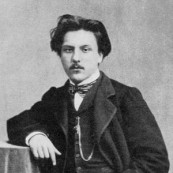






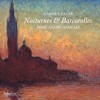
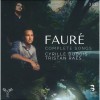
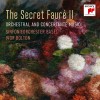
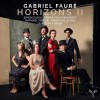
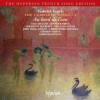
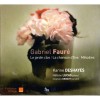


![Piano trios (Gilels, Kogan, Rostropovich) [5 CD]](http://static.classicalm.com/repository/collection-cover/small/219-img1316559969860933.jpg)
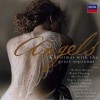
![Russian legends - Mstislav Rostropovich [10 CD]](http://static.classicalm.com/repository/collection-cover/small/275-img1319023256353734.jpg)
![Top 100 der Klassik [CD 4 of 5]](http://static.classicalm.com/repository/collection-cover/small/1367-img1372594763111487.jpg)
![Deutsche Grammophon Classic Gold [CD 3 of 3]](http://static.classicalm.com/repository/collection-cover/small/1316-img1361384204300956.jpg)



![Tresors des Requiem [CD 3 of 4]](http://static.classicalm.com/repository/collection-cover/small/1379-img1374575884596875.jpg)
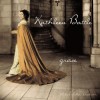
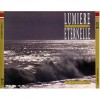
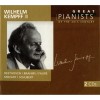
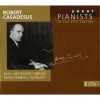
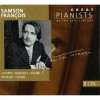
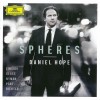
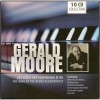
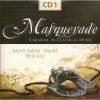
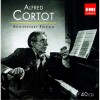
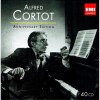

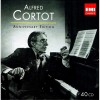
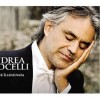
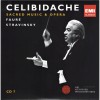
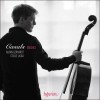

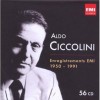
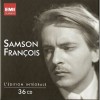
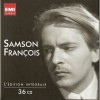
![Cecilia Bartoli – Sospiri [CD 2 of 2]](http://static.classicalm.com/repository/disk-cover/small/3054-img1375438347839669.jpg)

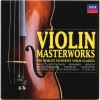
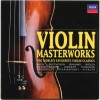
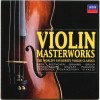
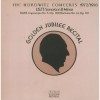
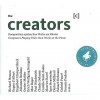
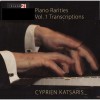


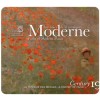
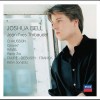
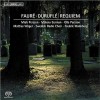
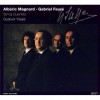

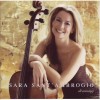
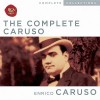

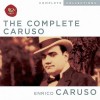


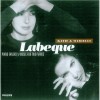
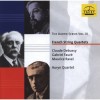
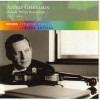
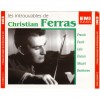
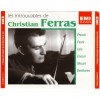
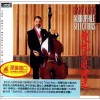
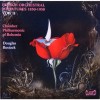
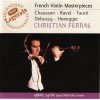
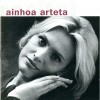
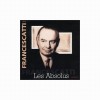
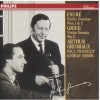
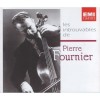
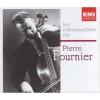
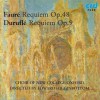
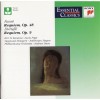
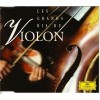
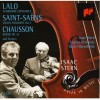
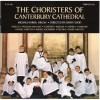
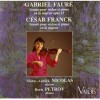

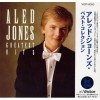
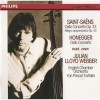
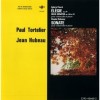
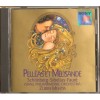
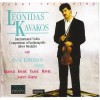
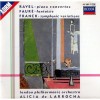
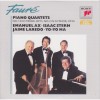
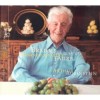
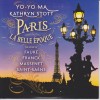
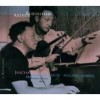
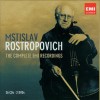
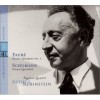
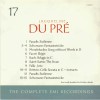
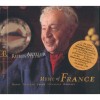
![The Heifetz Collection, Volume 4 [2 CD]](http://static.classicalm.com/repository/disk-cover/small/721-img1315251228394533.jpg)

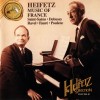
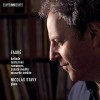
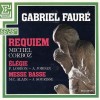
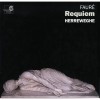
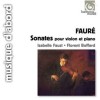
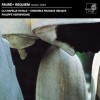
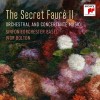
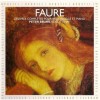
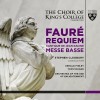
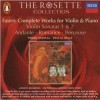
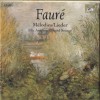
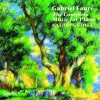
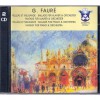
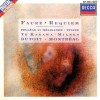
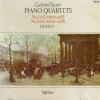
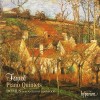
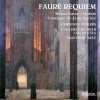

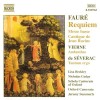
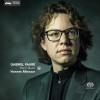

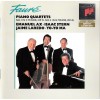
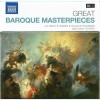
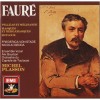
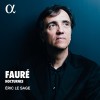
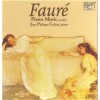
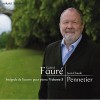
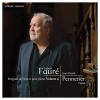
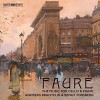
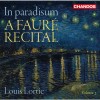
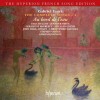
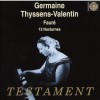
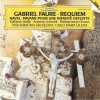
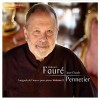
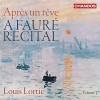
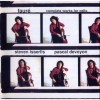
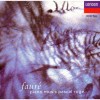
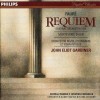
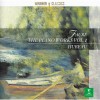
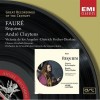
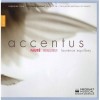
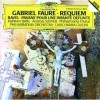
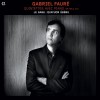
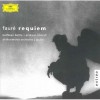
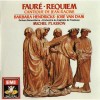
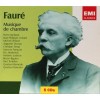
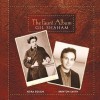
![Faure - 13 Barcarolles [Thyssens-Valentin]](http://static.classicalm.com/repository/composition-cover/small/28854-img1475561561627994.jpg)
![Faure - Valses Caprices, Impromptus, Pieces Breves [Thyssens-Valentin]](http://static.classicalm.com/repository/composition-cover/small/28855-img1475562409261848.jpg)
